Basil is one of the most popular herbs in the world and is used in a wide variety of cuisines. It is a staple in Italian cooking and is also commonly used in Thai, Indian, and Southeast Asian dishes. With its sweet, anise-like flavor, basil adds a unique and delicious touch to any meal.
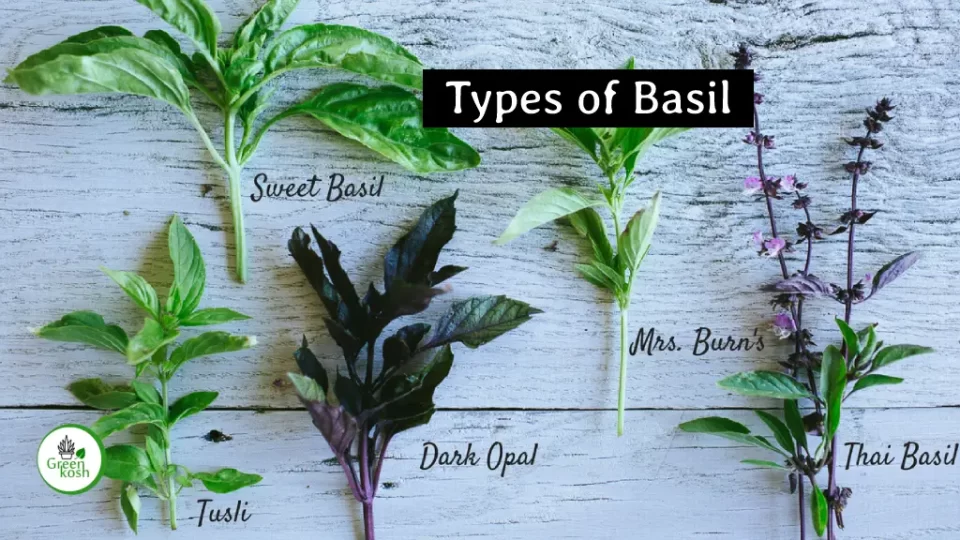
There are many different varieties of basil, each with its own unique flavor and characteristics. Some of the most popular varieties include sweet basil, Thai basil, lemon basil, holy basil, purple basil, and cinnamon basil.
1. Sweet Basil

This is the most common variety of basil and is known for its sweet and spicy flavor.
It is the type of basil used in traditional Italian dishes such as pesto and Caprese salad. It has large, green leaves and a strong aroma.
2. Genovese Basil
This variety is also commonly used in Italian cuisine, particularly in the region of Genoa.
It has a strong, sweet, and pungent flavor with large, dark green leaves. It is a great choice for making pesto sauce.
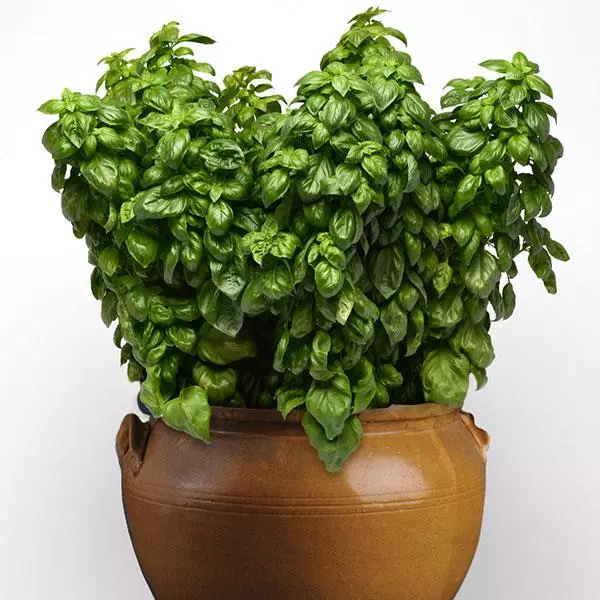
Difference b/w Sweet Basil & Genovese Basil
Sweet basil and Genovese basil are both popular varieties of basil known for their sweet and strong flavors. However, they have some differences in taste, aroma and appearance.
Sweet basil is the most common variety of basil and is known for its sweet and spicy flavor. It has large, green leaves and a strong aroma. It is commonly used in traditional Italian dishes such as pesto and Caprese salad.
Genovese basil, on the other hand, is particularly known for its strong, sweet, and pungent flavor. It is also commonly used in Italian cuisine, particularly in the region of Genoa. It has large, dark green leaves, and it is a great choice for making pesto sauce. Both of them are versatile and used in a variety of dishes.
3. Lemon Basil
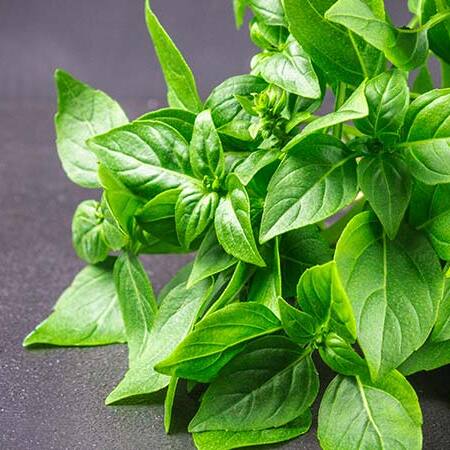
As the name suggests, this variety has a strong lemon flavor and aroma. It is often used in fish and seafood dishes, as well as in salads and dressings.
It has smaller, lighter green leaves and a more delicate appearance compared to sweet basil.
4. Holy Basil (Ocimum Tenuiflorum)
Also known as “Tulsi” in India, this variety is considered sacred in Hinduism and is used in spiritual and medicinal practices.
It has a strong, spicy and slightly bitter flavor and is often used in Ayurvedic medicine as a stress-relieving herb. It has small, green leaves with a purple stem.
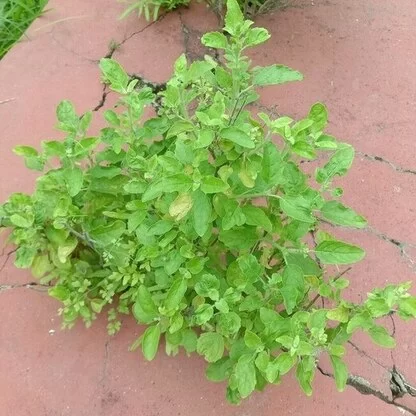
Rare Varieties of Basil
5. Red Rubin Basil
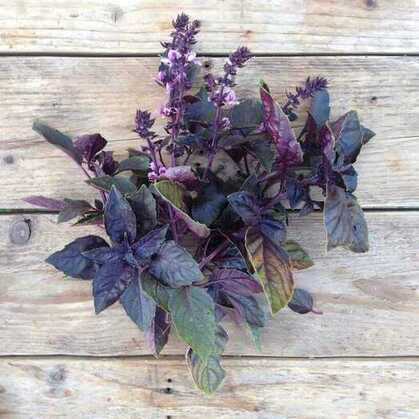
It is known for its deep red color and strong, sweet flavor. It is a hybrid variety, developed by crossing dark purple basil with sweet basil. It has dark red leaves and a strong aroma.
It is often used as a garnish or in salads for its visual appeal and also can be used in a variety of dishes.
6. Purple Basil
This variety has a mild flavor and a dark purple color. It is often used as a garnish or in salads for its visual appeal.
It has large, dark purple leaves and a strong aroma.
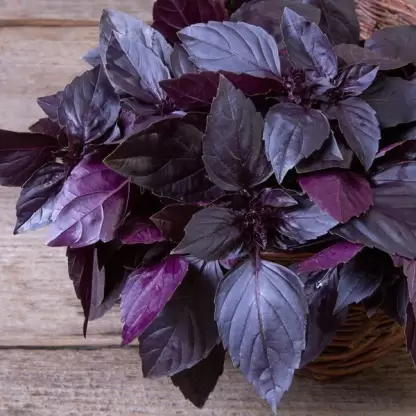
Purple Basil Vs Red Rubin Basil
Purple basil has a milder flavor than sweet basil and is known for its beautiful purple-colored leaves. It is often used as an ornamental plant due to its vibrant color and can be used in salads, sandwiches and pasta dishes.
Red Rubin basil, on the other hand, is known for its deep red color and strong, sweet flavor. It is a hybrid variety, developed by crossing dark purple basil with sweet basil. It has dark red leaves and a strong aroma.
7. Thai Basil

Thai Basil has a distinct licorice or anise flavor, making it a popular choice in Southeast Asian cuisine. It is often used in Thai and Vietnamese dishes such as pad thai and pho.
It has small, purple-tinted leaves and a more delicate appearance compared to other varieties.
8. Cinnamon Basil
This variety has a distinct cinnamon flavor and is often used in sweet dishes such as desserts and fruit salads.
It has small, green leaves with a purple stem and a more delicate appearance compared to other varieties.
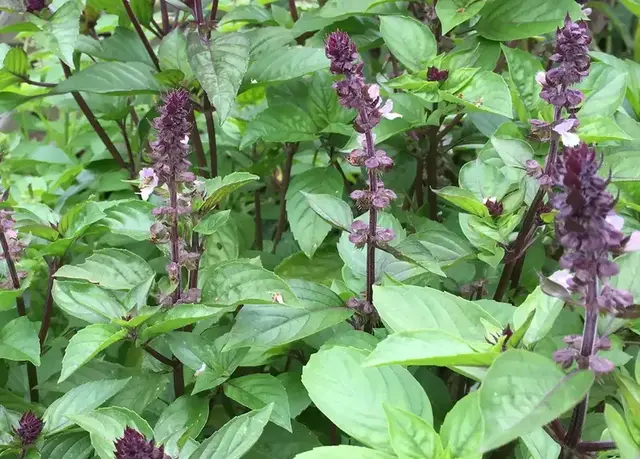
Cinnamon Basil vs Thai Basil
Cinnamon Basil and Thai Basil are both varieties of basil known for their unique flavors and aromas. However, they have some differences in taste, appearance and culinary use.
- Cinnamon Basil is known for its distinct cinnamon flavor and is often used in sweet dishes such as desserts and fruit salads. It has small, green leaves with a purple stem and a more delicate appearance compared to other varieties.
- Thai Basil is a staple in Southeast Asian cuisine, particularly in Thai and Vietnamese dishes. It has a strong anise or licorice flavor, and a more pungent aroma compared to sweet basil. It has small, dark green leaves, and purple stems. It is often used in stir-fries, curries and soups. Both of them add a unique flavor to the dishes they are used in and are considered a must-have in the kitchen for many cooks.
9. Spicy Globe Basil

This variety is a compact and dwarf plant, with a strong, spicy flavour and a round shape. It is often used in container gardening or as a garnish.
10. Opal Basil
This variety has a milder flavor than sweet basil and is known for its beautiful purple-colored leaves.
It is often used as an ornamental plant due to its vibrant color and can be used in salads, sandwiches and pasta dishes.
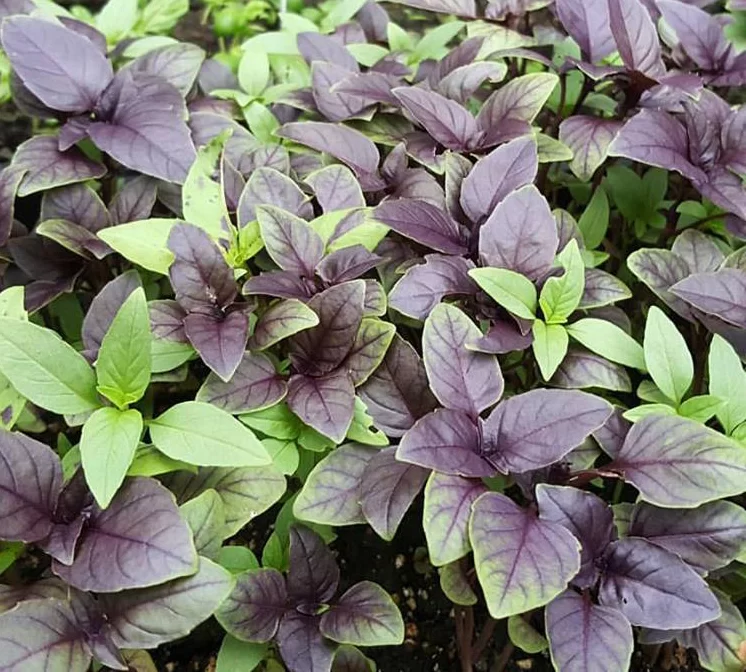
11. Lettuce Leaf Basil

It is a variety of basil known for its large, ruffled leaves. The leaves are similar in shape and size to those of lettuce and are a bright green color. It has a milder flavor than the typical sweet basil, with a hint of licorice and mint.
The leaves are often used whole in salads, sandwiches and as a garnish. It is also great for pesto and other basil-based sauces because of its large leaves.
In addition to its delicious flavor, basil is also believed to have many health benefits. It is a good source of Vitamin K, which is important for maintaining bone health, and is also high in antioxidants, which help to protect the body against damage from free radicals.
Basil is very easy to grow and can be planted in pots or in the ground. It is a warm-weather herb and should be planted after the last frost of the season. It prefers well-drained soil and should be watered regularly. It’s also important to pinch off the flowers to prevent the plant from going to seed, this will help promote bushier growth.
In conclusion, basil is a versatile and delicious herb that is used in a wide variety of cuisines. With its many different varieties and unique flavors, it is sure to add a touch of freshness and flavor to any dish. Whether you’re looking to add a touch of sweetness to your pasta sauce, a hint of lemon to your seafood dishes, or a spicy kick to your Thai curry, there is a variety of basil that will suit your needs.
FAQs
Q1: Can basil be grown indoors?
Yes, basil can be grown indoors as long as it receives adequate sunlight and is planted in well-draining soil.
Q2: How do I know when basil is ready to be harvested?
Basil is ready to be harvested when the leaves are fully formed and the plant is about 6 inches tall. It is best to harvest basil in the morning when the oils are the most concentrated.
Q3: Can I freeze basil?
Yes, basil can be frozen for later use. One way to do this is by washing and drying the leaves, then placing them in an airtight container or plastic bag in the freezer. Another way is by blending the basil leaves with a little bit of oil, and freezing the mixture in an ice cube tray.
Q4: How do I care for basil?
To care for basil, keep the soil consistently moist but not waterlogged, and provide it with plenty of bright, indirect light. Pinching back the tips of the plant will also encourage bushier growth. Additionally, basil should be fertilized occasionally with a water-soluble fertilizer.
